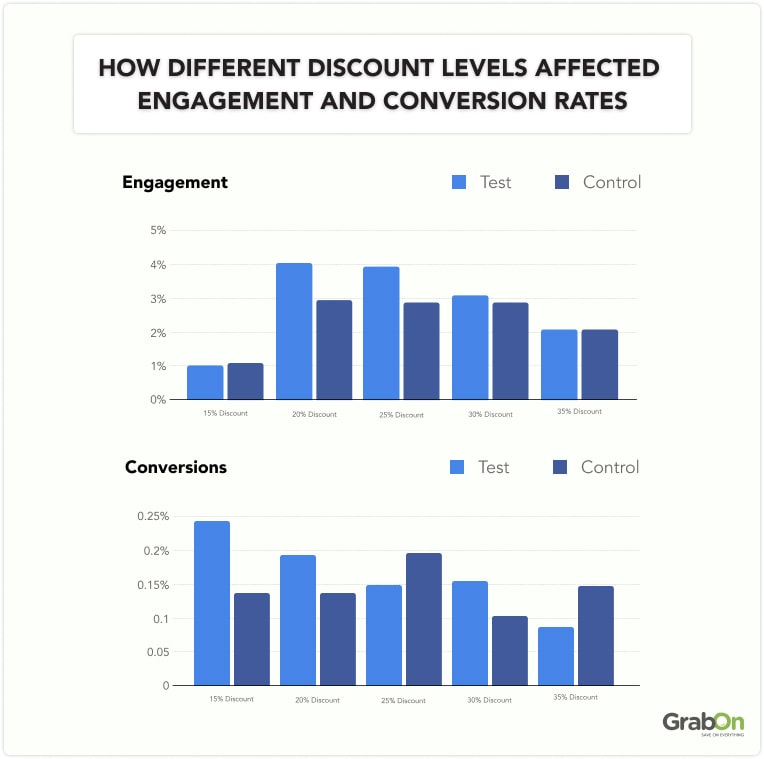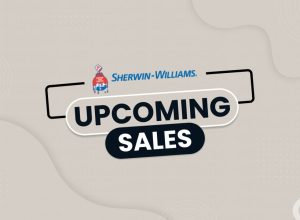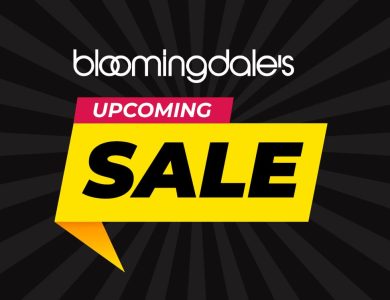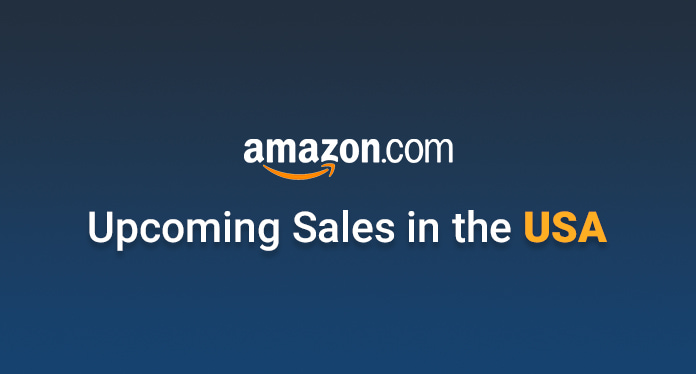Which discount percentage drives the highest conversion rate?

Discounts are always an exciting time for buyers and have continued to be an effective marketing strategy through which organizations can make their products or services more attractive and interesting to consumers.
However, not all discounts will be effective. So, which discount will actually push the customer towards buying that product? Let’s look at the discount percentages that bring about the highest conversion rates and why.
Understanding Conversion Rates and Discounts
Conversion rates and discounts play a vital role in marketing and sales strategies. The conversion rate indicates the percentage of potential buyers who take action, such as making a purchase or subscribing to a service. Discounts, which provide price reductions or special promotions, encourage customers to purchase by making the offer more attractive. When used together, these two strategies can transform hesitant shoppers into buyers and increase sales. However, it’s essential to maintain the right balance by offering discounts that attract customers while also protecting profit margins.

Why Do Discounts Work?
Discounts work because they make people feel like they're getting a good deal. When something is on sale, it creates a sense of urgency in people who want to buy it before the offer ends. Discounts also help customers justify spending money, especially on things they might not have planned to buy. It taps into the fear of missing out, making them feel they shouldn't miss the chance. Overall, discounts reduce hesitation and encourage quicker decisions, which is why they're such a powerful tool for boosting sales.
Discount Percentages That Convert Best
Hence the question, which discount percentages are most effective? Although it is impossible to provide a definitive, universal result, data and findings have revealed certain ranges are more effective than others.

50% discount stands out as the most popular, with the highest percentage of mentions. This suggests that people are especially drawn to offers where they can save half the price.
Following that, discounts of 40% and 60% are also very common, showing that anything close to 50% off is generally appealing to shoppers. Discounts like 20%, 30%, and 70% are also mentioned quite a bit, likely because they strike a balance between being valuable and believable.
Mid-range discounts such as 15%, 25%, 35%, and 65% are mentioned less frequently but still hold some presence. These offers are big enough to catch attention and drive interest, but still realistic enough that people trust and act on them.
10% to 15% Off
Discounts in the 10% to 15% range are more modest but effective, especially for high-ticket items. Here's why:
- Better for High-Value Products: For products that are already expensive, a 10% or 15% discount can represent a significant dollar amount. For example, 10% off a $1,000 item is still $100 saved.
- Maintains Brand Value: Smaller discounts can help the perceived value of a brand. Luxury brands or premium products often use lower discounts to avoid looking “cheap.”
- Effective for Loyalty Programs: A 10% discount is commonly used as an incentive in customer loyalty programs. It's a nice gesture without heavily impacting margins.
Advantage
- Small discounts like these can encourage quick and impulse purchases
Disadvantage
- The 10% to 15% discount range may not be too catchy for some customers, especially new buyers.

20% to 30% Off
Conventional deals for many businesses are usually in the range of 20-30% discount and are often regarded as the “sweet spot” for many businesses. Here's why:
- Significant Enough to Be Attractive: A 20% or 30% in most customers' minds seems like a lot. It's enough to catch their eye and make them feel like they are being offered a generous offer since customers like to feel like they are getting good value for their money.
- Protects Profit Margins: For businesses, this range lies perfectly within the range that is preferred by customers while at the same time, it does not pressure business establishments to cut down their profits.
- Psychological Impact: Percentages such as 20% and 30% are easily comprehensible and do not require calculation in the minds of customers, making the discounts more real,
Quite often, companies have a 20% storewide discount which can be applied during events like first-time customer visits or during sales. This range is also helpful in encouraging repeat purchases.
Advantage
- A 20% to 30% discount is significant enough for consumers to boost purchases.
Disadvantage
- Customers may expect these discounts too often, leading to less interest in buying products at full price.

25% and 33% Off
Odd percentages like 25% or 33% can be surprisingly effective. Why?
- Stand Out from the Crowd: Odd numbers catch the eye because they're less commonly used than the more standard 10%, 20%, or 50% discounts.
- Perceived as Unique Offers: A 33% discount, for instance, feels more personalized or specific to an event or sale, making it seem special.
- Great for Bundling: Discounts like 25% off on buying two or more items can drive up the average order value, encouraging customers to spend more.
Advantages
- Customers may purchase in bulk or add extra items to their carts to make the most of the savings.
Disadvantages
- A 25%-33% off can impact the company’s profits, particularly if they require expensive expenditures.

50% Off or More
Anything with a 50% discount or even higher sounds interesting to buyers and could make them think that they simply have to buy something before the offer ends or the stock finishes. Here's what makes this discount work:
- Creates a Sense of Urgency: Such a huge discount is typically linked with clearance sells or other promotional sales which compel customers to make purchases quickly.
- High-Volume Sales: Although profit per unit is decreased, its significant discount can result in a greater number of products sold at once and a decreased amount of stocks left.
Nevertheless, discounts like these are only useful if implemented at the right time. If used frequently, customers expect lower prices all the time hence diminishing the value of the brand and decreasing future profits.
Advantages
- 50% off is a great way to increase conversions and traffic by creating a buzz among shoppers.
Disadvantages
- Deep discounts may make the customer doubt the quality of the product.

How Different Discount Levels Affected Engagement and Conversion Rates

Engagement was highest at 20% and 25% discounts, with the Test group showing more than 4% engagement, meaning more people were clicking or interacting with the offer. As the discount increased to 30% and 35%, engagement slightly dropped, and the lowest engagement was seen at 15%, suggesting that smaller discounts catch less attention.
Interestingly, conversions were highest at the 15% discount level in the Test group, where over 20% of people who engaged went on to make a purchase. This shows that even though fewer people interacted with the 15% offer, those who did were more likely to buy. For the 25% discount, the Control group converted slightly better than the Test group, and at 35%, conversions were the lowest overall.
Free Shipping also drives higher conversion
Free shipping significantly influences online purchasing decisions. If a store does not provide free shipping, it risks losing many potential customers. Unexpected shipping fees are one of the primary reasons shoppers abandon items in their carts without completing the purchase. While free shipping can enhance sales and improve customer satisfaction, it needs to be implemented thoughtfully. Businesses should consider factors such as shipping costs, average customer spending, and whether offering free shipping is financially viable.
- Only 3% of shoppers don't care about shipping costs.
- 42% said they'd join a loyalty or membership program just to get free shipping.
- 47% would spend more to hit the free shipping minimum.
What About Dollar-Off Discounts?
While percentage-based discounts are popular, fixed dollar amounts (like $10 off) can be equally, if not more, effective in certain situations:
- Clear Savings: A flat dollar amount can be easier for customers to understand and appreciate, especially on smaller purchases.
- Psychological Impact: A discount that gives $50 off a $200 purchase might sound more appealing than 25% off, even though it's the same amount. The dollar figure feels more tangible.
Discounts for Your Audience
It's important to remember that the effectiveness of a discount depends on your target audience and product type. Some customers are motivated by smaller, frequent discounts, while others may only be swayed by a large sale event. Testing different discount strategies, understanding your customer base, and finding the right balance between driving sales and maintaining profit margins is key.
FAQs
What drives a high conversion rate?
A high conversion rate is driven by an optimized checkout process, a clear value proposition, free shipping, personalized marketing, social proof like reviews and testimonials, and a localized shopping experience. These enhance customer trust, reduce friction, and make the shopping experience more appealing, leading to higher conversions.
How much discount should be given to the customer?
The discount depends on your business goals and margins. Typically, 10-20% works well to attract customers without hurting profits. For high-margin products, you can go up to 30%. Test and adjust based on results.
Which type of product’s sales would be likely to benefit most from using coupons?
Products with high competition, seasonal demand, or low customer loyalty benefit most from coupons. These include groceries, clothing, electronics, and beauty products. Coupons encourage trial, repeat purchases, and clear out inventory effectively.
What percentage discount is most effective?
It has been shown from studies that among all the possible discounts that can be offered to customers, a 15% discount rate provides the highest sales conversion rates. Although the higher discounts are also useful to an extent, it is equally true that such discounts always denote proportionately higher conversions and could often have a tendency to dilute the brand equity of the product. It was found that offering a discount of 15% is an optimal point since it offers potential consumers adequate motivation for consuming the products without cutting too deeply into the company's profits.
What is the best conversion rate percentage?
A conversion rate that performs well in e-commerce is anywhere from 2.5% to 3%. However, any conversion rate above 3 percent is considered very good, putting a business in a class of its own.
Is 20% off a good discount?
Of course, “a 20% discount” is usually considered to be a good discount. The 20% price reduction is significant enough to be a motivating factor for the customer to decide to buy the product and still, the company's profit margin won't be too affected.



